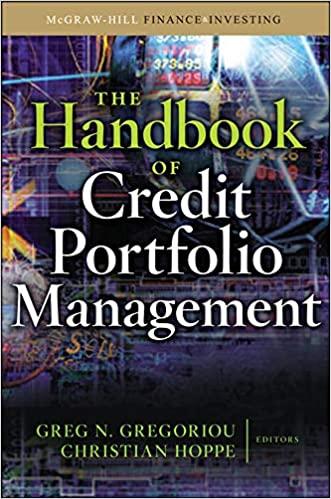Answered step by step
Verified Expert Solution
Question
1 Approved Answer
2. CAPM, portfolio risk, and return (VL) one question, help!! Consider the following information for Stocks A, B, and C. The returns on the three
2. CAPM, portfolio risk, and return (VL) 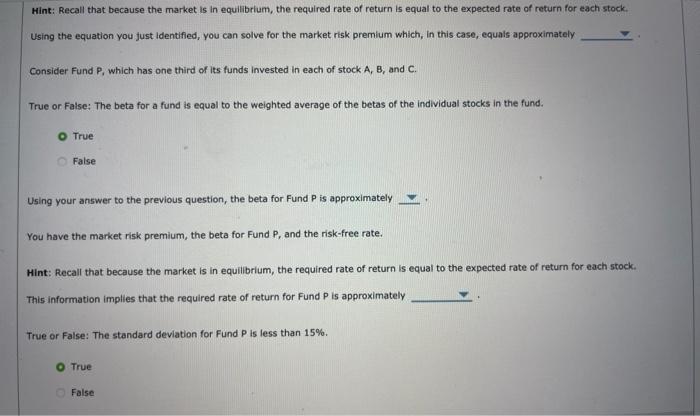
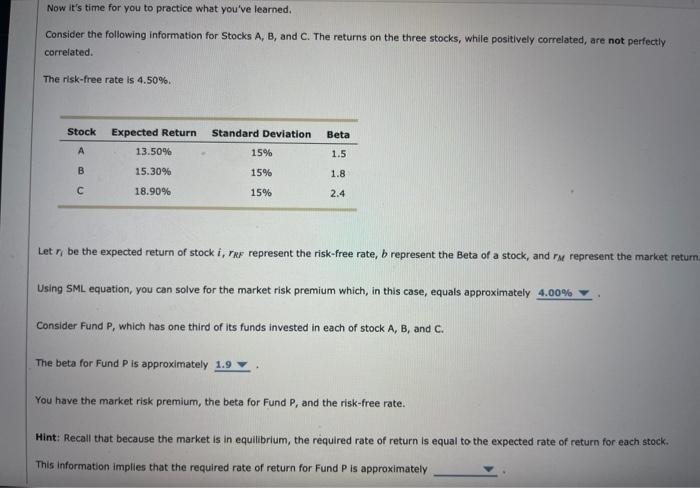
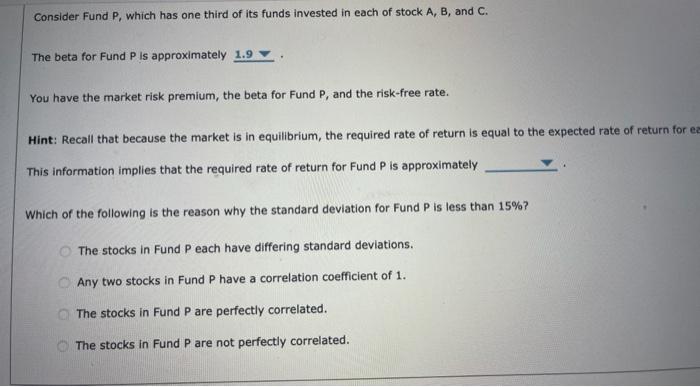
Consider the following information for Stocks A, B, and C. The returns on the three stocks, while positively correlated, are not perfectly correlated. The risk-free rate is 4.50%. Let ri be the expected return of stock i,rRF represent the risk-free rate, b represent the Beta of a stock, and rM represent the market return. Assume that the market is in equilibrium, with the required rate of returns equal to expected returns. According to the video, which equation most closely describes the relationship between required returns, beta, and the market risk premium? ni=rRFb(rMrRF)ri=rRF+rMrRbr1=rRF+b(rM+rRF)ri=rRF+b(rMrRF) Hint: Recall that because the market is in equilibrium, the required rate of return is equal to the expected rate of return for each stock. Hint: Recall that because the market is in equilibrium, the required rate of return is equal to the expected rate of return for each stock. Using the equation you just identified, you can solve for the market risk premium which, in this case, equals approximately Consider Fund P, which has one third of its funds invested in each of stock A,B, and C. True or False: The beta for a fund is equal to the weighted average of the betas of the individual stocks in the fund. True False Using your answer to the previous question, the beta for Fund P is approximately You have the market risk premium, the beta for Fund P, and the risk-free rate. Hint: Recall that because the market is in equilibrium, the required rate of return is equal to the expected rate of return for each stock. This information implies that the required rate of return for Fund P is approximately True or False: The standard deviation for Fund P is less than 15%. True False Consider Fund P, which has one third of its funds invested in each of stock A,B, and C. The beta for Fund P is approximately You have the market risk premium, the beta for Fund P, and the risk-free rate. Hint: Recall that because the market is in equilibrium, the required rate of return is equal to the expected rate of return for ei This information implies that the required rate of return for Fund P is approximately Which of the following is the reason why the standard deviation for Fund P is less than 15% ? The stocks in Fund P each have differing standard deviations. Any two stocks in Fund P have a correlation coefficient of 1. The stocks in Fund P are perfectly correlated. The stocks in Fund P are not perfectly correlated. Now it's time for you to practice what you've learned, Consider the following information for Stocks A, B, and C. The returns on the three stocks, while positively correlated, are not perfectly correlated. The risk-free rate is 4.50%. Let ri be the expected return of stock i,rRF represent the risk-free rate, b represent the Beta of a stock, and rM represent the market return Using SML equation, you can solve for the market risk premium which, in this case, equals approximately Consider Fund P, which has one third of its funds invested in each of stock A, B, and C. The beta for Fund P is approximately You have the market risk premium, the beta for Fund P, and the risk-free rate. Hint: Recall that because the market is in equilibrium, the required rate of return is equal to the expected rate of return for each stock. This information implies that the required rate of return for Fund P is approximately one question, help!! 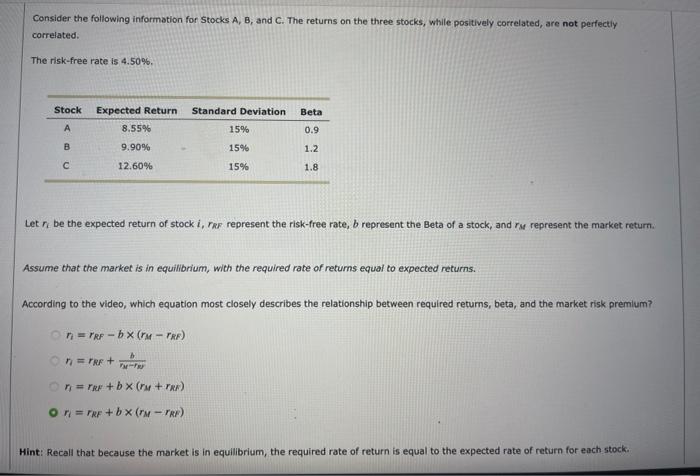




Step by Step Solution
There are 3 Steps involved in it
Step: 1

Get Instant Access to Expert-Tailored Solutions
See step-by-step solutions with expert insights and AI powered tools for academic success
Step: 2

Step: 3

Ace Your Homework with AI
Get the answers you need in no time with our AI-driven, step-by-step assistance
Get Started


